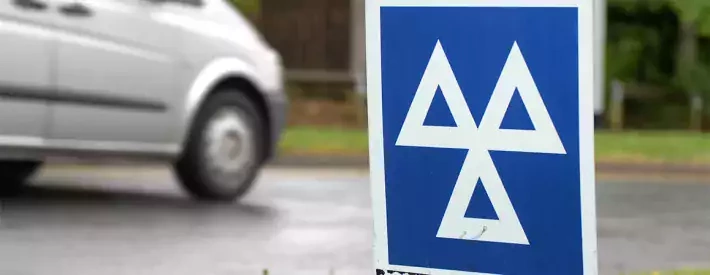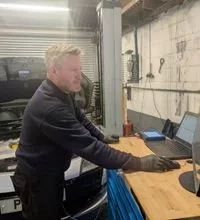How to become an MOT tester in three easy steps

Becoming an MOT tester is now easier as a sponsoring test station is no longer required, and it’s an extra skill to add to your repertoire, increasing your employability
Step 1: Are you eligible to be a MOT tester?
Testers are also motorists and you must have a full UK licence for the vehicle classes that you want to test. In addition to this you must be a skilled mechanic with at least four years of full-time employment, repairing the vehicles that you want to test. You must be of “good repute” and have no unspent convictions for criminal offenses.
A skilled mechanic, to fit the criteria, must hold an accepted qualification or accreditation to test class 3,4,5 or 7 vehicles (cars, private buses, and light commercial vehicles). Check the full list of accepted qualifications. The IMI has an accreditation route if you do not hold an accepted qualification.
To qualify in classes 3 or 5, you must already be a class 4 and 7 tester who holds a level 2 testing certificate and has completed a MOT demonstration test.
Step 2: Training
You can complete your training with any approved provider, (COVID-19 restrictions allowing). If you’re a business that is adding MOT testing as a new venture, you will also need to complete an MOT manager qualification, this is called the authorised examiner designated manager in the MOT handbook.
The course will include theory and practical training to become an MOT tester, it’s a minimum of 29 hours long and at least eight hours will be practical training. You will also create an account with the MOT testing service and order your smart card.
The course is split into 5 parts:
- Safe working practices in the vehicle test centre
- Working relationships within the test centre
- Managing your own development as an MOT tester
- Carrying out pre-test checks for an MOT test
- Carrying out an MOT test
The assessments for the course include:
- Multiple choice question test (which is open book)
- Practical assessment
You must pass both to gain the qualification and on completion you will get a Level 2 MOT Testing Award in either:
- Class 1 and 2 vehicles (group A)
- Class 4 and 7 vehicles (group B)
Once you have this certificate you can proceed onto the final step to become an MOT tester.
Step 3: Demonstration tests
Don’t forget about the demonstration tests which are booked by the prospective tester. You will need to first add your certificate number in the profile section under “qualifications” on the MOT testing service. Once this is successfully applied, you can choose the location of the demonstration test by using their ID number. This can be a training centre or a MOT station.
The request for a demonstration test is made by calling the DVSA on 0300 123 9000, option 2, then option 4. You will need your tester ID and the location ID you selected. The DVSA will then call you to set a test date; this should be within four weeks. You can always call for an update if you don’t hear from them.
For the test you will need:
- Knowledge of the MOT testing manuals and special notices
- Completed practice of your inspection routine learnt at training
- To have practised using your test equipment with different vehicles
- Observed an experienced tester test different vehicles
- A vehicle that is at least three years old and of the class you’re being tested on
- Your UK driving licence (if you do not have a photocard licence you will need additional photo ID, such as your passport)
- Your Level 2 MOT testing award certificate
The DVSA examiner will explain each step, you will be asked to carry out a demonstration test and record the result in the practice version of the MOT testing service. They will also ask you some questions about the MOT.
Frequently asked questions
Can I test anywhere?
You must be registered at the test station you want to perform tests at, more information about this can be found in the handbook.
What happens if I fail the demonstration test?
You’ll be given feedback by the examiner and they will tell you what to do next.
I don’t have a recognised qualification, but have worked as a mechanic for years, can I test?
The short answer is no, but you can gain an approved accreditation to prove your competency and use this in place of a qualification. This can be a faster route than gaining the qualification for an experienced person.
My employer wants to pay for my training, can they do this?
Yes, it’s worth checking for any contractual obligations.
My employer doesn’t want to pay for my training, can I do it anyway?
Yes, it’s worth remembering that the qualification needs to be maintained through actively testing and continuous professional development, an employment situation that doesn’t allow for this may make maintaining a testing status difficult.
I used to test and now want to return to it; do I have to do all of this?
The route to return is determined by why you stopped testing and how long you have stopped for. If you stopped testing voluntarily for more than six months, but less than five years, you can complete the current training and assessment for the year, take extra training and then call the DVSA for a “return to MOT testing” demonstration test. A voluntary break of more than five years, you start as new tester.
For those who have ceased testing for formal or disciplinary periods of 28 days or less must take the current year’s annual training and assessment, you should take extra training for the area of disqualification and the DVSA can ask for evidence of this. A demonstration test will be required. For a disciplinary period of two to five years, you will need to complete the process as if a new start.




